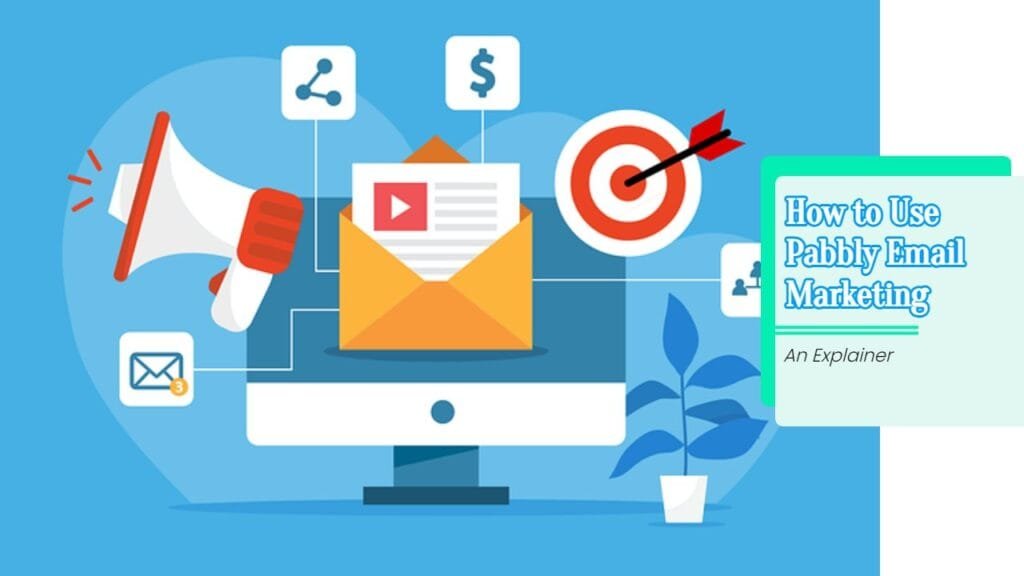In the competitive digital landscape, understanding and leveraging paid advertising can be a game-changer for businesses aiming to boost their lead generation efforts. This comprehensive guide is designed to equip you with the necessary tools and knowledge to navigate the world of paid advertising efficiently.
Dive in to explore the rich tapestry of opportunities that paid advertising unfolds, and take a significant step toward achieving your business goals with optimized and well-strategized advertising campaigns. Let this be your roadmap to creating advertising strategies that resonate with your target audience and translate into substantial leads.
Understanding the Basics of Paid Advertising
Paid advertising refers to the strategy of leveraging online platforms where you pay to display your promotional content. It comes in a myriad of forms, each offering different avenues for connecting with prospective customers. From search ads that appear in search engine results to display ads showcased on websites, the realm is vast and varied. You can also explore video ads on social media platforms or engage audiences through sponsored content.
The types of paid advertising are as follows:
Search Ads: Usually text-based, these ads appear in search engine results based on the user’s query.
Display Ads: These are visual ads displayed on websites, often leveraging imagery and graphics to catch the user’s attention.
Social Media Ads: Platforms such as Facebook and Instagram offer various ad formats to target a high-engagement user base.
Native Advertising: These ads match the content format of the platform where they are displayed, offering a non-intrusive advertising experience.
Understanding the nuances of these various ad types forms the bedrock of crafting a successful paid advertising strategy, setting a solid foundation for reaching the right audience at the right time.
The Role of Paid Advertising in a Business’s Marketing Strategy
In the modern business ecosystem, paid advertising holds a pivotal role in steering a business towards growth and visibility. It complements organic strategies by offering a fast-track route to showcasing your products or services to a targeted audience. Moreover, it can be finely tuned to meet specific business objectives, be it brand awareness, lead generation, or sales conversion.
Paid advertising allows for precise targeting, ensuring that your marketing messages reach the demographics most likely to convert. Its adaptable nature means campaigns can be altered midway based on performance metrics, ensuring optimal ROI.
Moreover, paid advertising works harmoniously with other marketing strategies. It amplifies content marketing efforts, supports SEO strategies, and plays a critical role in a multifaceted marketing approach that spans various digital platforms. When wielded correctly, it can drive traffic, foster engagements, and convert curious browsers into committed customers.
As we delve deeper into this guide, we will navigate the intricacies of leveraging different platforms and crafting ad copies that resonate, setting you on a path to paid advertising proficiency.
Platforms for Paid Advertising
Understanding and selecting the right platform for your paid advertising campaign is pivotal. Each platform offers unique opportunities and a different set of tools to reach your target audience effectively. Here, we will delve into the core platforms and their individual features, helping you identify the perfect match for your business.
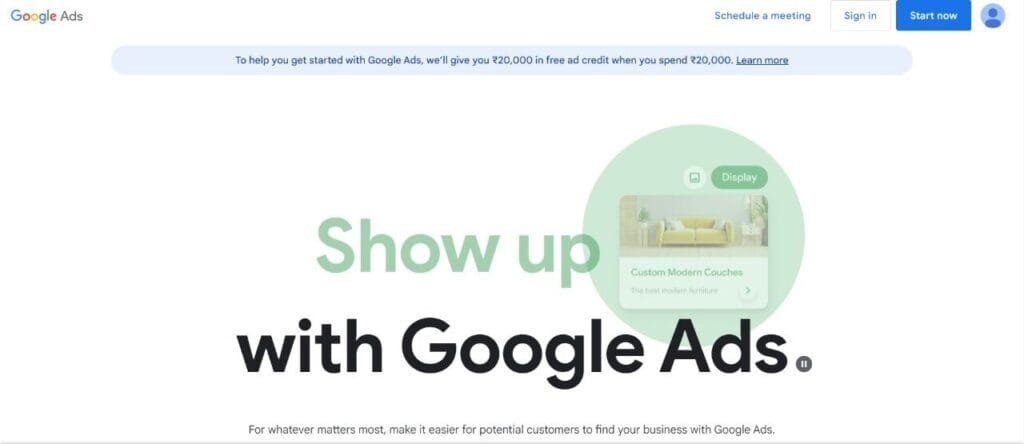
#1. Google Ads
The behemoth in the paid advertising space, Google Ads, offers a plethora of advertising solutions to cater to different business needs and objectives.
Search Ads
Search ads are text ads that are displayed in the Google search results when a user searches for keywords relevant to your business. Crafting a compelling search ad requires a deep understanding of keyword research and SEO principles to ensure high visibility and click-through rates.
Strategy: Focus on keyword relevance and ad quality to increase your ad’s chances of being displayed.
Setting up: Begin with keyword research, identifying high-value keywords to target. Create ad groups, and develop compelling ad copies focusing on these keywords.
Budgeting: Allocate a budget based on the keyword competition and your business objectives, utilizing options such as Maximize Clicks to control spending.
Display Ads
Display ads are visual advertisements showcased on a variety of websites that are a part of Google’s Display Network. These ads are great for building brand awareness and re-engaging potential customers.
Strategy: Leverage visually appealing graphics and concise messaging to capture user attention.
Setting up: Create visually captivating images and set up targeting parameters, such as demographic and interest-based targeting, to reach your desired audience.
Budgeting: Establish a budget considering the potential reach and objectives of your display ad campaign.
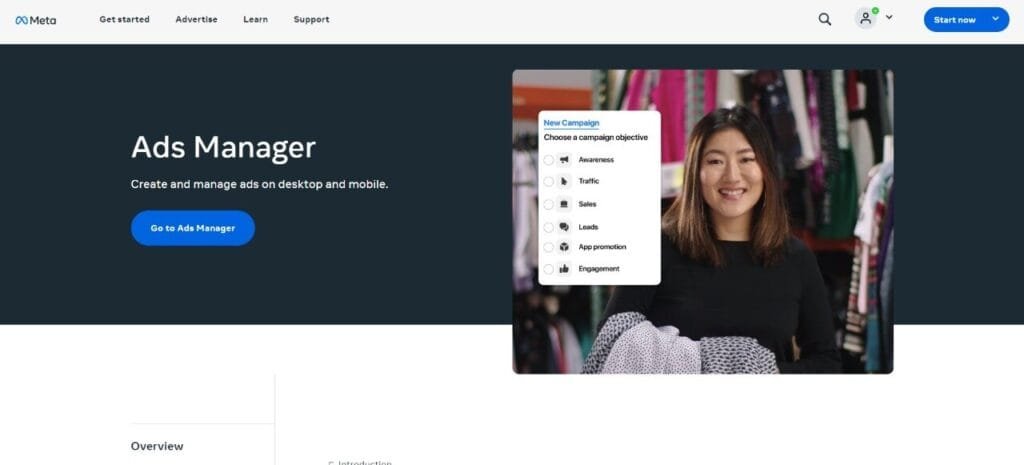
#2. Facebook Ads
A dominant player in the social media space, Facebook offers diverse ad formats to engage a vast and varied audience.
Carousel Ads
Carousel ads allow you to display multiple images or videos in a single ad, providing a rich and engaging storytelling medium for brands.
Strategy: Craft a cohesive narrative using sequential images or videos to guide users through your value proposition.
Setting up: Develop a series of visually harmonious and compelling images or videos, paired with engaging captions to create a carousel ad.
Budgeting: Consider a budget that accommodates creative development and reaches a substantial portion of your target audience.
Video Ads
Video ads on Facebook are a dynamic way to showcase your brand, offering an immersive experience to the viewers.
Strategy: Engage users with compelling visuals and storylines, keeping the video concise yet impactful.
Setting up: Develop a high-quality video with clear messaging and a strong call-to-action to encourage user engagement.
Budgeting: Allocate a budget factoring in video production costs and the scope of audience reach you aim to achieve.
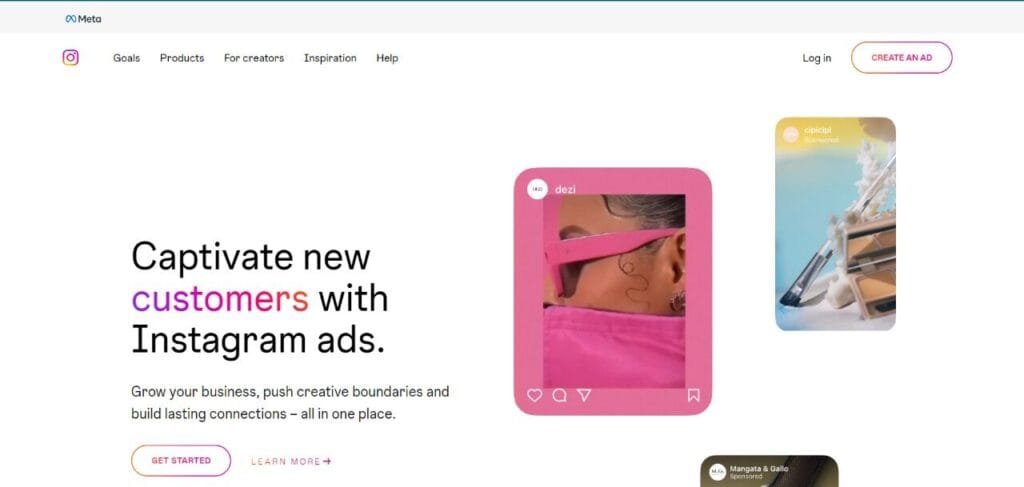
#3. Instagram Ads
Instagram, a visually driven platform, offers an excellent avenue for brands to showcase their products and services through stunning imagery and video content.
Strategy: Focus on high-quality visuals and creative content to capture the audience’s attention.
Setting up: Define your campaign objectives, create visually captivating content, and select your target audience for maximum impact.
Budgeting: Set a budget that ensures a substantial reach while offering a good ROI.
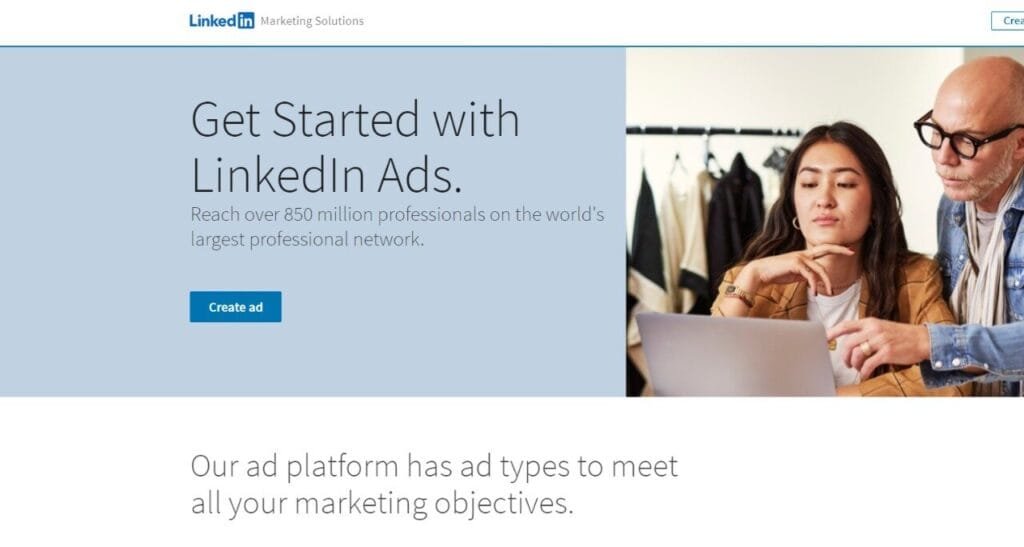
#4. LinkedIn Ads
LinkedIn, predominantly a platform for professionals, can be a goldmine for B2B marketers and companies looking to recruit talent or forge high-value connections. Let’s explore the various avenues of advertising on LinkedIn.
Sponsored Content
Sponsored content allows you to amplify your content’s reach by promoting posts directly in the LinkedIn feed of your target audience.
Strategy: Create informative and professional content that caters to industry leaders and professionals in your field.
Setting up: Start with crafting a compelling post on your LinkedIn page. Once satisfied, opt for sponsoring the content, defining your target audience based on various factors such as job titles, company size, or industry.
Budgeting: Establish a budget keeping in mind the premium audience LinkedIn caters to. It’s advisable to allocate a substantial amount for a broad reach and effective engagement.
Lead Gen Forms
Lead gen forms are pre-filled forms that make it easy for users to engage with your ads, helping you garner high-quality leads.
Strategy: Pair these forms with compelling offers or valuable content to encourage users to share their details willingly.
Setting up: Create a lead gen form while setting up your LinkedIn ad, ensuring the form is concise and the offer is clear and attractive.
Budgeting: Focus on generating quality leads rather than quantity, thus allocate a budget that facilitates reaching out to a premium audience for substantial leads.
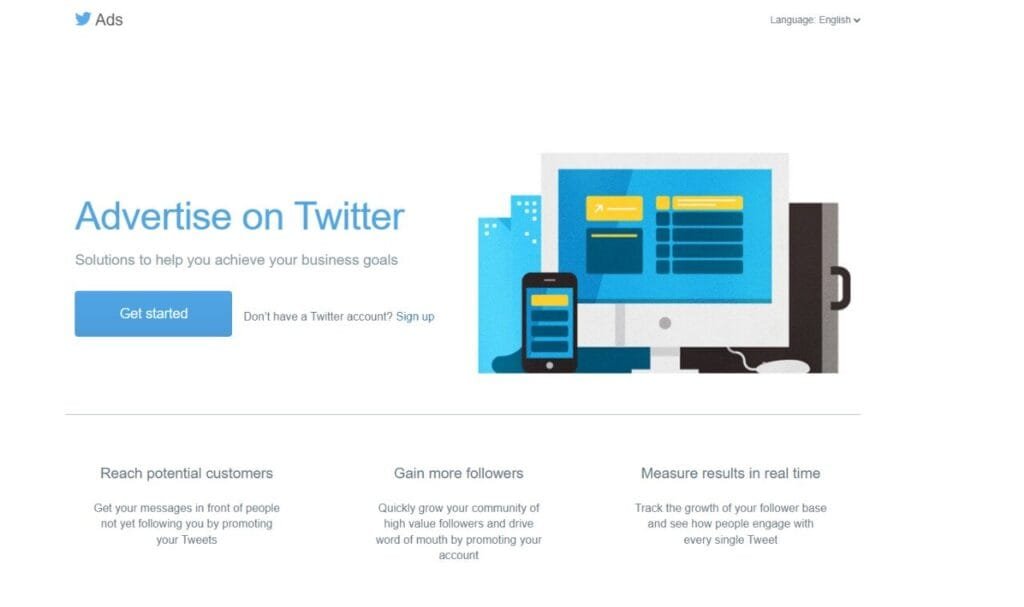
#5. Twitter Ads
Twitter, with its real-time conversation dynamics, offers vibrant opportunities to engage with a responsive audience. Let’s unpack the avenues for advertising on this platform.
Promoted Tweets
Promoted tweets are regular tweets but with a budget behind them to reach a wider, targeted audience.
- Strategy: Create tweets that are engaging, timely, and resonate well with the prevailing trends and conversations on the platform.
- Setting up: Begin with a tweet that encapsulates your message vividly and crisply. Choose your target audience based on demographics, interests, or followers of a specific account.
- Budgeting: Establish a budget that caters to achieving a broad reach and engaging effectively with the target audience, evaluating costs per engagement to guide your budgeting decisions.
Website Cards
Website cards are a type of Twitter ad format that pairs a visual with a clickable button directing users to your website, thus increasing the chance of conversions.
- Strategy: Utilize website cards to create visually appealing and actionable ads, encouraging users to take a desired action like visiting your website.
- Setting up: Craft a compelling visual accompanied by a crisp and clear call-to-action. Set up targeting parameters to reach the right audience.
- Budgeting: Allocate a budget that balances reach and ROI, considering the creative development and potential website traffic it can generate.
Crafting a Successful Ad Copy
Creating a captivating ad copy is akin to crafting a masterful story; it is pivotal in guiding the prospective clients through the narrative you wish to convey. It encompasses a strategic blend of creativity and meticulous planning. Let’s delve into how to construct ad copies that not only attract but convert.
Headline Creation Strategies
The headline is the proverbial ‘hook’; it grabs attention and compels the reader to delve deeper.
- Research and Adaptation: Study high-performing headlines in your niche and understand the dynamics behind their success.
- Clarity: Maintain clarity in your message, ensuring it communicates the core value or proposition succinctly.
- Emotional Appeal: Infuse a dose of emotional appeal, tapping into the aspirations or pain points of your target audience.
Crafting Compelling Ad Body Content
Once the headline hooks the audience, the body content must sustain their interest, guiding them to the eventual call-to-action.
- Benefits over Features: Highlight the benefits your product or service offers, rather than just listing features.
- Storytelling: Utilize the power of storytelling, weaving a narrative that resonates with the audience.
- Proof Elements: Integrate testimonials, reviews, or statistics to build trust and authenticate your claims.
Utilizing Effective Call-to-Action (CTA) Phrases
A potent CTA guides the audience on the step to take next, serving as a beacon directing them to the desired action.
- Urgency: Infuse a sense of urgency in your CTAs to spur immediate action.
- Value Proposition: Clearly elucidate what value the audience will gain by responding to the CTA.
- Simplicity: Keep it simple and direct, avoiding convoluted phrases that can confuse the audience.
The Role of Visual Elements in Ad Copy
Visual elements act as the aesthetic appeal that not only draws attention but aids in better comprehension and retention of the message conveyed.
- Consistency: Ensure a visual harmony that aligns with your brand’s identity and the message you wish to convey.
- Quality: Utilize high-resolution images or videos to maintain a professional and appealing outlook.
- Relevance: Align visuals with the content, ensuring they are not just attractive but pertinent, enhancing the message conveyed.
Examples of Successful Ad Copies
Analyzing successful ad copies offers a roadmap to understanding what works and how to emulate such success in your campaigns.
- Case Studies: Incorporate case studies showcasing the successes achieved through your product or service, painting a picture of potential results.
- Industry Leaders: Showcase ads from industry leaders, delineating the strategies that made the ad copies effective.
- Analytical Breakdown: Provide a detailed breakdown of successful ads, elucidating the elements that worked in harmony to craft a compelling narrative.
Landing Page Optimization for Lead Generation
After crafting a captivating ad copy, the next critical step in a successful paid advertising campaign is optimizing the landing page to seamlessly take your potential leads from intrigue to conversion. Let us explore the strategies and techniques that can enhance your landing pages, bringing forth an array of opportunities and tremendous value for your business.

Design Elements for a High-Converting Landing Page
Your landing page should be the epitome of cohesion, a digital space where every element comes together to facilitate the user in their journey towards conversion.
- User-Friendly Design: Create a design that is intuitive, ensuring that users can navigate the page without any hassle.
- Load Time: Optimize for speed to ensure users don’t bounce off due to prolonged load times.
- Mobile Optimization: Ensure your landing page is mobile-optimized to cater to a significant portion of internet users.
Importance of Congruence between Ad Copy and Landing Page
Creating a seamless transition from the ad copy to the landing page is vital, nurturing trust and maintaining the interest sparked by your captivating ad copy.
- Message Match: Ensure that the core message portrayed in the ad aligns perfectly with the content on the landing page, crafting a harmonious user experience.
- Visual Consistency: Maintain visual consistency, utilizing the same color schemes, fonts, and graphic styles to foster a unified brand presentation.
- Value Proposition: Reinforce the value proposition highlighted in the ad copy, delving deeper into the benefits on your landing page, encouraging the user towards conversion.
Techniques for Landing Page Optimization
A well-optimized landing page employs a host of techniques working synergically to enhance the user experience and boost conversion rates.
- Engaging Media: Incorporate compelling visuals and multimedia elements to craft a rich and engaging user experience.
- Social Proof: Leverage testimonials, reviews, and case studies to build trust and showcase the value you bring to your customers.
- Clear CTA: Strategically place a clearly defined CTA, guiding users naturally to take the desired action.
A/B Testing for Landing Pages
A/B testing is the beacon guiding you to the most effective version of your landing page, helping to fine-tune elements to perfection.
- Hypothesis Formation: Start with forming hypotheses based on insights and analytics regarding what changes might boost performance.
- Systematic Testing: Conduct systematic tests, varying one element at a time to precisely identify what works best.
- Analytical Assessment: Analyze the results meticulously to understand the variants’ performance and implement the superior options.
Setting and Managing Budgets
Crafting a stellar ad copy and optimizing your landing page are foundational steps in setting up a successful paid advertising campaign. However, orchestrating a campaign that yields substantial ROI necessitates prudent budget management. Here, we delve into the strategies that can aid in efficiently managing your budget to facilitate a high-yielding paid advertising campaign.
Determining a Budget for Your Campaign
Before launching your campaign, it is pivotal to allocate a budget that aligns with your business objectives and the competitive landscape.
- Historical Data: Analyzing historical data can provide insights into the budgetary allocations that have proven successful in the past.
- Industry Benchmarks: Consider industry benchmarks to gauge an appropriate budget that can foster competitiveness in your niche.
- Trial and Error: In the absence of substantial data, a trial and error approach can be adopted, initiating with a conservative budget and scaling based on the performance metrics.
Strategies for Bid Management
Bid management is a dynamic process, and leveraging strategies that align with your campaign objectives can enhance efficiency and effectiveness.
- Automated Bidding: Platforms offer automated bidding strategies that optimize bids based on varying goals, be it maximizing clicks or targeting a specific position on the page.
- Manual Bidding: While it necessitates a deeper involvement, manual bidding offers control, allowing you to tweak bids based on firsthand insights and observations.
- Seasonality Adjustments: Consider fluctuations due to seasonality, adjusting bids to capitalize on heightened demand during peak seasons.
Measuring ROI and Optimizing Budget Allocation
ROI stands as a testimony to your campaign’s success, providing a quantifiable measure to gauge the efficacy of your budget allocation.
- Tracking Conversions: Set up tracking mechanisms to accurately record conversions, facilitating a clear insight into the ROI.
- Cost Analysis: Delve into a meticulous cost analysis, discerning the channels and strategies that are delivering the best ROI.
- Feedback Loop: Create a feedback loop, constantly refining your budget allocations based on the ROI insights garnered.
Understanding Cost per Click (CPC) and Cost per Acquisition (CPA)
CPC and CPA stand as pivotal metrics in the realm of paid advertising, offering insights into the cost-effectiveness of your campaigns.
- CPC Overview: Understanding the CPC, which delineates the cost incurred for each click, aids in gauging the initial engagement levels.
- CPA Insights: CPA goes a step further, offering insights into the cost involved in acquiring a customer, providing a deeper understanding of your campaign’s effectiveness in driving conversions.
- Optimization Strategies: Develop strategies to optimize these metrics, working towards reducing the CPC and CPA while maintaining or enhancing the quality of the leads generated.
Targeting Strategies
In the intricate landscape of paid advertising, targeting strategies hold the reins, guiding your campaign to reach the right audience at the right time, fostering engagements that convert. We will delve into the crucial aspects of targeting strategies that can be harnessed to craft campaigns that resonate with potential customers.
Demographic Targeting
Demographic targeting allows you to tailor your ads to a specific audience based on demographic attributes such as age, gender, education, and marital status.
- Data Insights: Utilize the wealth of data available to understand the demographic profile of your potential customers, thereby tuning your strategies to align with this insight.
- Customization: Customize your ad copies and visuals to resonate well with the targeted demographic group, enhancing the chances of engagement and conversion.
- Dynamic Campaigns: Craft dynamic campaigns that can adapt to the changing demographic trends, keeping your advertising strategy agile and relevant.
Psychographic Targeting
Moving a notch deeper, psychographic targeting involves segmenting the audience based on their personality traits, values, interests, and lifestyles.
- Persona Development: Develop detailed customer personas that encapsulate the psychographic attributes of your target audience, fostering campaigns that resonate at a deeper level.
- Value Proposition: Tailor your value proposition to align with the psychographic insights, creating a connection that goes beyond the superficial levels.
- Content Strategy: Develop a content strategy that appeals to the psychographic traits of your audience, enhancing engagement through resonating content.
Behavioral Targeting
Behavioral targeting pivots on the actions and behaviors exhibited by the users, crafting strategies that are aligned with their browsing history, purchase patterns, and interactions with your brand.
- Retargeting: Leverage behavioral insights for retargeting, reaching out to users who have exhibited interest in your offerings, fostering conversions through precise targeting.
- Predictive Analytics: Harness predictive analytics to foresee potential behaviors, allowing you to craft strategies that are a step ahead, meeting the users in their journey.
- Personalization: Personalize your campaigns based on the behavioral insights, creating a bespoke experience that enhances engagement and fosters conversions.
Geo-Targeting
Geo-targeting focuses on reaching out to potential customers based on their geographical locations, allowing you to tailor your campaigns based on the regional preferences and trends.
- Local SEO: Harness the potential of local SEO in your paid campaigns, enhancing visibility in the geographical regions that hold potential.
- Regional Preferences: Customize your campaigns to align with the regional preferences, resonating well with the local audience.
- Language Customization: Consider language customization in geo-targeting, enhancing the relatability of your ads to the local audience.
Device Targeting
In a digitally integrated world, device targeting stands pivotal, allowing you to reach out to your audience through the devices they frequently use, be it smartphones, tablets, or desktops.
- Responsive Designs: Ensure your ads and landing pages are responsive, delivering a seamless experience across all devices.
- Device-Specific Campaigns: Consider crafting device-specific campaigns, tuning the strategies to leverage the unique attributes of each device type.
- Analytical Insights: Gain analytical insights on the device preferences of your target audience, honing your strategies to align with these preferences, and enhancing the effectiveness of your campaign.
Analytics and Performance Monitoring
As we forge forward in our comprehensive guide, we transition into a pivotal area in paid advertising — analytics and performance monitoring. This segment outlines how analytical tools and key performance indicators can function as the backbone of your campaigns, ensuring you stay on track to meet your objectives. Moreover, it sheds light on the nuances of A/B testing and its role in optimizing your strategies. Let’s unravel these dimensions step by step.
Setting Up Analytics Tools
Before diving into the analytics of your campaigns, you need a robust setup of analytical tools. These instruments offer a wide lens view of how your campaigns are performing.
- Integration: Integrate analytics tools such as Google Analytics with your advertising platforms to achieve a holistic overview of your campaign’s performance.
- Custom Dashboards: Develop custom dashboards to monitor the metrics that are most pertinent to your business objectives, offering a quick insight into the performance at a glance.
- Training: Ensure you and your team are well-acquainted with the tools at your disposal, enabling you to leverage their full potential in monitoring and optimizing the campaigns.
Key Performance Indicators (KPIs) to Monitor
KPIs function as the yardstick for your campaign’s success. Understanding and choosing the right KPIs can offer deep insights into the health of your advertising efforts.
- Conversion Rate: Keep a close eye on the conversion rates, understanding the percentage of the audience that took the desired action after engaging with your ad.
- Click-Through Rate (CTR): Monitoring the CTR helps in understanding the effectiveness of your ad copy and its resonance with the audience.
- Cost-Per-Acquisition (CPA): Tracking the CPA gives insights into the economic feasibility of your campaigns, understanding the cost involved in acquiring a customer through the campaign.
A/B Testing for Ad Copies
- A/B testing stands as a beacon in understanding the varying effectiveness of different ad elements, allowing you to optimize your campaigns based on real-time feedback.
- Element Variation: Experiment with variations in headlines, body content, and call-to-actions to understand what resonates best with your audience.
- Consistent Monitoring: Engage in consistent monitoring of the A/B tests to quickly iterate and optimize based on the insights garnered.
- Creative Approaches: Don’t shy away from testing creative approaches in A/B tests, sometimes a fresh perspective can yield surprising results.
Utilizing Analytics Data for Campaign Optimization
The analytical data harvested through your tools isn’t just for scrutiny but a goldmine to optimize your future campaigns.
- Predictive Analysis: Leverage predictive analysis to forecast trends and customer behaviors, aligning your strategies accordingly.
- Personalization: Utilize the data to personalize your campaigns, catering to the preferences and behaviors exhibited by the audience.
- Feedback Loop: Develop a feedback loop where the insights from analytics are constantly fed back into the campaign strategy, fostering a cycle of continuous improvement.
Compliance and Ad Policies
As you venture further in crafting your paid advertising strategy, it is quintessential to acquaint yourself with the diverse policies and compliance standards that govern various advertising platforms. Adherence to these norms not only fosters a healthy advertising environment but protects your brand from unforeseen roadblocks and sanctions. Let’s delve into understanding the intricacies involved in ensuring compliance with ad policies.
Understanding Platform-Specific Ad Policies
Navigating the labyrinth of ad policies demands a granular understanding of the distinct guidelines put forth by each platform. Tailoring your ads to align with these specific requirements will ensure smooth sailing.
- Google Ads Policies: Familiarize yourself with Google’s restrictive content policies and the editorial requirements to curate ads that are in harmony with Google’s standards.
- Facebook and Instagram: These platforms have guidelines, notably around the use of personal attributes and regulated goods, ensuring that ads maintain a level of decorum and safety.
- LinkedIn and Twitter: Professionalism dictates the policy landscape in LinkedIn, while Twitter focuses on adherence to legalities and fostering safe engagements.
Ad Creatives and Policy Compliance
Creating ad creatives within the bounds of policy compliance doesn’t stifle creativity but encourages ethical and safe advertising endeavors. Here’s how you can go about it:
- Imagery: Abide by guidelines concerning the use of appropriate images, avoiding content that could potentially be deemed as offensive or inappropriate.
- Claims and Promises: Steer clear of making unsubstantiated claims or promises that cannot be fulfilled to maintain authenticity and adherence to policy guidelines.
- Respectful Communication: Ensuring your ad communicative style respects all groups of individuals, promoting a culture of inclusivity and diversity.
Common Reasons for Ad Disapprovals and How to Avoid Them
Despite best efforts, ad disapprovals can occur. Understanding the common pitfalls and strategies to avoid them can be your safeguard.
- Misleading Content: Steer clear from creating content that could potentially be seen as misleading or deceptive to the users.
- Prohibited Content: Familiarize yourself with the list of prohibited content for each platform and conscientiously avoid utilizing such elements in your ads.
- Technical Errors: Sometimes ads are disapproved due to technical errors; a meticulous review of the ad specifications and formats can help in avoiding such glitches.
Leveraging Remarketing and Retargeting
In the evolving digital landscape, keeping your prospects engaged is paramount to achieving business objectives. That is where remarketing and retargeting step in, acting as potent tools in recapturing the interest of potential customers who have interacted with your brand previously. Let’s delve deeper to grasp the nuances of these strategies and how they can propel your business to new heights.
Remarketing vs. Retargeting: Understanding the Difference
Before embarking on creating strategies, it is pertinent to understand the difference between remarketing and retargeting.
Remarketing: Typically involves re-engaging customers through email campaigns. It is tailored to reach individuals who have already had some level of interaction with your brand, offering them products or services based on their previous interactions.
Retargeting: On the other hand, generally involves online ad placements or display ads to target users who visited your website or mobile app. It operates primarily through cookies tracking the users’ online behavior and presenting them with ads that resonate with their preferences and past interactions.
By understanding these definitions, you can tailor strategies to appeal to different segments of your audience effectively.
Setting Up Remarketing Campaigns on Different Platforms
Each platform offers unique features for setting up remarketing campaigns, necessitating a detailed understanding of how to maximize efficiency on each platform. Here’s how:
Google Ads: Utilizing Google Analytics, you can create audiences based on users’ behavior and preferences, and target them with customized ads when they search on Google or browse other websites.
Facebook Ads: Leverage Facebook Pixel to track users’ actions on your website and target them later with personalized ads on the Facebook platform.
Twitter Ads: Engaging with users who have shown interest in your products or services is possible through tailored audiences, allowing for a more personalized approach.
LinkedIn Ads: We already have an in-depth article on the topic.
Strategies for Retargeting
Retargeting can be a game-changer for your business if done correctly. Here are the strategies to capitalize on:
- Segmentation: Grouping your audience based on their interaction level with your brand can offer more targeted and relevant ad experiences.
- Content Personalization: Tailoring content to suit the preferences of different user groups can significantly enhance engagement levels.
- Frequency Capping: Implementing a limit on the number of times a user sees your ad can prevent ad fatigue and maintain a positive brand image.
Creating Effective Remarketing Ad Copies
Remarketing offers the golden opportunity to woo back your potential customers. Creating ad copies that resonate requires a focused approach:
Relevancy: Crafting ad copies that are highly relevant to the users’ previous interactions with your brand can foster higher engagement levels.
Offer Incentives: Enticing users with special offers or discounts can be a successful strategy to rekindle their interest.
Clear Call-to-Action (CTA): A clear and compelling CTA can guide users on the next steps, encouraging them to re-engage with your brand.
Advanced Strategies for Paid Advertising
In an ever-evolving digital landscape, staying abreast with the latest advancements can be the linchpin to successful advertising campaigns. This section unravels advanced strategies that incorporate technology and innovation, ensuring your paid advertising initiatives are not just current but future-ready.
Exploring Automation in Paid Advertising
Automation has become a cornerstone in optimizing advertising campaigns, by streamlining processes and improving efficiency. Here’s how you can leverage automation in paid advertising:
AI-Powered Bid Management: Automating bid management using artificial intelligence can help in achieving optimal bid values that maximize the ROI.
Dynamic Ad Creation: Automation tools can dynamically create ads based on the user’s behavior and preferences, serving the most relevant content to different audience segments.
Automated Reporting: Facilitating regular updates on your campaign performance through automated reporting tools ensures that you are always informed and can make data-driven decisions.
Understanding and Utilizing Artificial Intelligence (AI) in Campaigns
Artificial Intelligence (AI) stands as a beacon of innovation, offering unprecedented levels of personalization and efficiency. Let’s break down how to harness its potential:
- Predictive Analytics: AI can analyze massive data sets to predict future trends, helping you to stay one step ahead in your advertising strategy.
- Chatbots for Customer Service: Implementing AI-powered chatbots can enhance customer service by offering immediate responses to customer inquiries, hence improving user experience.
- Personalized Email Campaigns: AI can segment email lists accurately and create personalized email content, thereby increasing engagement rates and enhancing the user experience.
Leveraging Machine Learning for Predictive Analytics
Machine learning, a subset of AI, facilitates the analysis of complex data to identify patterns and predict future outcomes. Here’s how you can utilize it:
- Customer Segmentation: Machine learning algorithms can analyze user data to create more refined customer segments, enabling highly targeted advertising.
- Dynamic Pricing: Implementing dynamic pricing strategies using machine learning can help in optimizing the pricing of your products or services based on market demand and user behavior.
- Predictive Maintenance: Leveraging machine learning can aid in predictive maintenance of your digital assets, ensuring seamless user experiences and mitigating potential issues before they arise.
Innovative Approaches in Paid Advertising
In a field as dynamic as paid advertising, innovation is key. Below we detail strategies to stay ahead in the game:
Augmented Reality (AR) Ads: Engaging users through AR ads can offer a more immersive and interactive ad experience, setting your brand apart in the crowded digital space.
Voice Search Optimization: As voice searches become increasingly popular, optimizing your ads for voice search can help in reaching a broader audience and improving user experience.
Interactive Content: Creating interactive content, such as quizzes or polls, can increase user engagement and provide valuable insights into user preferences and behavior
Wrapping it Up
In our comprehensive journey exploring the expansive world of paid advertising for lead generation, we have delineated the crucial aspects, right from understanding the basics to delving into advanced strategies powered by AI and machine learning. We have underscored the critical role of crafting compelling ad copies, optimizing landing pages, and deploying targeted strategies to reach the right audience at the right time.
Adherence to ad policies and leveraging the potent tools of remarketing and retargeting can significantly enhance your campaign’s effectiveness, ushering in a higher ROI. Harness the insights and strategies outlined in this guide to forge a path of sustained success in your paid advertising endeavors.
Read Next:
- SaaS Website SEO Audit: Assessing Technical and On-Page Factors
- Keyword Research for SaaS: Identifying Industry-Specific Terms
- SaaS SEO Reporting: Tracking Metrics and Performance
- Using Power Words and Emotional Triggers for On-Page SEO
- Earning Backlinks through Scholarship Programs
- Building Backlinks through Crowdsource Content Creation
- On-Page SEO for Local Landing Pages
- Strategies for On-Page SEO for PDFs and Documents
- On-Page SEO for Blog Posts and Long-Form Content
- Implementing Accelerated Mobile Pages (AMP) for On-Page SEO
- SEO for SaaS Blog Posts: Strategies for High-Quality Content
- JavaScript and On-Page SEO: Best Practices
- User Reviews and SaaS SEO: Leveraging Customer Testimonials




















